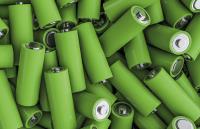 Add My Company
Add My Company
Sign In
Off-Peak Renewable Energy Storage
28-02-2019

The Challenge of...
It’s 5:30 pm and you just arrived home from a long day at work. You walk through the door and flip on the lights. Maybe you even turn on the kettle, television, or preheat the oven for dinner. Regardless of what you do when you get home, you probably need electricity to do it. Yet despite our dependence on this source of power, most of us don’t give a second thought to where it comes from. In the vast majority of the world, most countries are still overly dependent on fossil fuels such as coal, oil, petroleum, and natural gas. Fossil fuels are the remnants of plants and animals buried deep beneath the earth’s surface that have (over hundreds of millions of years) transformed into the combustible materials that we use today as fuel. Unfortunately, there are a number of negative issues with using fossil fuels. The first is that fossil fuels are a limited resource that we have been consuming at an unsustainable pace, which means we will eventually run out. This overconsumption of fossil fuels has led to the second issue, the production of dangerous levels of greenhouse gases, which have significantly contributed to global warming.
While promising changes have been made with the aim of cutting down on emissions, off-peak energy storage has prevented renewable energy from becoming a mainstream power source. For instance, when considering wind turbines, the wind may not always be blowing when you get home from work. And while other renewable energy sources may be much more predictable (tidal energy can be calculated quite accurately hundreds of years in advance) the tidal schedule may not necessarily coincide with the annual viewing of the Fools and Horses Christmas Special! The challenge is then to find a way to store the energy intermittently produced by renewable sources to use when consumer demand peaks. Fortunately, the past decade has seen major progress in the area.
The following three innovations are just a few of the technologies helping to pave the way towards an emission-free future:
Underwater Storage: There have been a number of projects aimed at storing energy underwater in order to minimize ecological and visible impacts. One of the most interesting propositions involves storing energy as air in rocks at the bottom of the North Sea. While the concept sounds far-fetched, the energy stored as air has the ability to be injected into porous formations drilled into sandstone in the seabed. The air would then remain in the seabed as a reservoir for future use. Once needed, the pressurized air can be released, driving a turbine that would generate electricity. This would allow energy to be stored during the summer months when electricity needs are low and used during the winter when needs are higher. University studies have found that the North Sea has the potential to store 1 ½ times the UK’s electricity needs for January and February.
Cryo-Power: Yes, the same technology that athletes have been using for improved recovery times has the ability to solve the great engineering challenge of storing energy. Excess energy from renewable sources such as wind are used to take in air and remove the components that would freeze (Carbon Dioxide and water vapour). The remaining air (mostly Nitrogen) turns into liquid as it’s cooled to -190°C and is stored in a vacuum flask until needed. When the demand for electricity increases, the liquid is warmed to the point of becoming a vapour or gas again. As the vapour expands it drives a turbine which produces electricity. Furthermore, the by-product cooling effect from the warming process can also be utilised for other applications, for example the cooling of a local data centre.
Suspended Underground Weights: Another promising concept specifically for the UK involves suspending massive weights (up to 2000 tonnes) in deep discarded mineshafts. When there is excess electricity on the grid the weight would be pulled to the top. Then, once energy was needed the weight would be released creating the momentum necessary to power generators. There are both positives and negatives to this method. The positives involve repurposing mineshafts, providing employment, and reinvigorating towns that were once dependant on the mining industry. However, mining towns are often in remote locations which presents the challenge of connecting to grids that service more populated areas.
While the problem of renewable energy storage has by no means been solved in its entirety, it is promising to see progress being made. Hopefully one day soon, we will come home from work and flip on the lights knowing that our electricity is coming from an innocuous and sustainable energy source.
For more information on Off-Peak Renewable Energy Storage talk to KTR U.K. Ltd
Enquire Now
List your company on FindTheNeedle.

